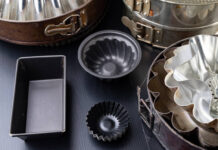We’ve all been there. An inattentive chuck of some dental floss, cotton buds or chewing gum into the toilet, a quick flush and then you think nothing more of it. Yet flushing anything other than pee, poo and paper down the loo can result in blocked pipes and drains that are costly to fix and cause environmental harm.
So, what can you flush down a toilet, and why should you care?
A study by Water UK found over 300,000 blockages each year, costing the British economy over £100m. From baby wipes to cigarette butts, incorrectly flushed items can also create monster fatbergs, such as the congealed mass of fat, the size of 11 double-decker buses found in London sewers. The gigantic fatberg risked flooding London streets with raw, untreated sewage and weighed 130 tonnes – equivalent to 19 African elephants or 100,000 packets of lard.
What should you do when faced with a blocked toilet?
First, don’t panic! If water doesn’t drain away, avoid flushing more water into the toilet – this could cause water to overflow and damage your home. If there are no visible blockages, calling in the experts is best.
From helping save the planet to stopping your loo from getting blocked, knowing what you can flush down a toilet – and what you should avoid – can help keep your drains flowing free.
What can you flush down a toilet?
When it comes to what can you flush down a toilet, remember the simple three ‘P’s rule – pee, poo and paper.
Anything else runs the risk of clogging up your waste pipes and drains. Even small items such as dental floss and disposable contact lenses can cause blocked drains and environmental damage, harming wildlife and leaving you with smelly drains and water that won’t flush away. That’s why knowing what you can flush down a toilet is important.
What items can’t you flush down a toilet?
To keep your plumbing clog-free, here is a list of the 14 things not to flush.
1. Non-flushable wipes
Wet wipes may be handy for cleaning spills and mucky babies, but they are a significant contributor to blocked toilets and drains as they don’t decompose. Baby wipes accounted for just over three-quarters of material that causes blockages by weight, according to a 2017 Wipes In Sewer Blockage Study by Water UK. Please put them in the bin instead.
2. Tampons and menstrual pads
Can you flush tampons down the toilet? The short answer is no. Menstrual products are designed to absorb water and not break down, making them especially bad news for loos. They can expand as they navigate your pipes, completely blocking pipes and drains throughout your home. Instead, carefully wrap tampons or pads in a sanitary bag before placing them in household rubbish.
3. Condoms
Condoms are not biodegradable, which means they don’t break down in water, and their latex material spells trouble for sewage treatment. They can also end up flushed into public spaces where they could present a hygiene risk. Wrap up condoms and dispose of them in the bin.
4. Kitchen towels
You’ve seen the ads – kitchen towels suck up liquid spills and don’t fall apart – and the same applies when flushed down the loo. Don’t mistake kitchen towels as being similar to loo roll. They don’t disintegrate easily in drains, leading to blockages.
5. Cosmetic wipes
Similar to non-flushable wipes but with added water resistance, they’re designed to wipe off make-up rather than take a trip around your u-bend. They’re nearly impossible to break down in water, attract grease and snag easily, and lead to blockages and additional build-up.
6. Dental floss
You’d be forgiven for thinking that stringy, thin strands of floss don’t pose a pipe-blocking risk, but you’d be wrong. It’s easily snagged as it travels through your piping, tangling to form netting that can catch and hold other non-flushables. Once your pearly whites are flossed, toss used dental twine into the bin.
7. Cotton buds, pads and balls
Basically, if it’s made of cotton, it shouldn’t make a splashdown into your toilet bowl. They don’t break down easily in water; their thin fibres can snag and tangle. Cotton buds carry a cargo of bendy plastic that helps them wedge solid in pipes, providing scaffolding for serious blockages.
8. Medication
Never dispose of medication down the loo, even old out-of-date medication, including pills and liquids. York University found traces of 29 pharmaceutical drugs in UK rivers, including antidepressants and antibiotics. While levels were low, flushed medicines can result in harm to the environment. Take expired medicines to a chemist or doctors’ surgery for safe disposal.
9. Hair
Clearing hair off the bristles of a brush and flushing strands down the loo is similar to flushing dental floss. Flushed hair can lurk in pipes and trap dirt and debris, resulting in giant, gunky hairballs that cause smelly drains and blocked loos. You can compost hair and turn it into useful garden mulch.
10. Cooking oil and fats
Oils and fats are the arch-nemesis of drains, so don’t allow them to enter the system via the loo. When fats and some oils cool, they solidify, transforming into surprisingly strong mini-fatbergs that require a lot of effort to break down and scrape free from the piping. Instead, let fats cool and place them in a container for disposal.
11. Contact lenses
This may be a surprise, but contact lenses are routinely flushed down the loo – around 15% to 20% of contact lens wearers throw lenses away this way. The resulting microplastics are a menace to waterways and rivers, harming wildlife and fueling one of the most dangerous pollutants clogging our environment.
12. Tissues
Perfect for catching germs when sneezing or coughing, but make sure you follow through on ‘catch it, bin it, kill it’. Tissues used for blowing noses aren’t the same a loo paper (which is OK to flush down a toilet) and don’t disintegrate – and you wouldn’t want them too, either. But that does make them unsuitable for flushing, so hygienically dispose of them in the bin.
13. Cigarette butts
Cigarette butts are like cockroaches – seemingly indestructible and littered everywhere. Their unique filter can include rayon, cellulose acetate, paper wrapping, as well as several hundred toxins and cancer-causing carcinogens. Not ideal for tossing into the sewage system via the loo, they are nearly impossible to break down.
14. Chewing gum
From one habit to another. Chewing gum can be like glue, moulding into shape when warm but setting hard as it cools, sticking to the inside of drains and pipes and quickly leading to blockages. Once the chew is through, pop your gum into the bin.
You may be interested in…
Best-selling modern toilet close coupled WC
Stuck for inspiration? Check out our list of best-selling Amazon products!
No products found.
This article may include affiliate links to products and services where we may receive a small fee to support the running of this site if you make a purchase or is a sponsored article from one of our select editorial partners providing valuable advice and information to our readers.































































